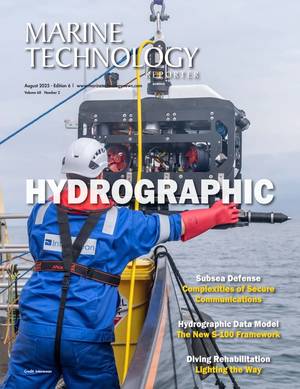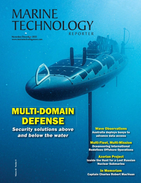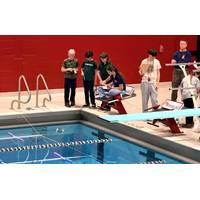
Middle Schoolers Participate in NUWC Division Newport's Annual SeaPerch Derby
an invitation to the SeaPerch International Competition to be held in May 2026 at the University of Maryland. Those teams were "The Whalers" from Kickemuit and "Delta" from Pennfield.Division Newport personnel serving as judges during the competition included DeSousa; Sensors and Sonar Systems Department engineers Drew Canfield and Kevin Quinn; Andrew DeSousa and Nicholas Elliott, both of the Undersea Warfare (USW) Combat Systems Department; John DiCecco of the USW Platforms and Payload Integration Department; Emily Goyette and Jack Terlisner, both of the USW Weapons, Vehicles and

AlphaGeo UK Joins GeoAcoustics Ltd in Channel Partner Network
GeoAcoustics Ltd, a manufacturer of hydroacoustic systems, has signed a channel partner agreement with AlphaGeo UK, a specialist provider of integrated solutions for uncrewed and remote marine operations.The agreement enables AlphaGeo UK to represent GeoAcoustics’ full portfolio of sonar systems, including the GeoSwath 4 interferometric bathymetric sonar, GeoScan side scan sonar, and GeoPulse sub-bottom profiler, across the UK and Ireland. The collaboration will place particular emphasis on integration with Uncrewed Surface Vehicles (USVs) and Remotely Operated Vehicles (ROVs).With a

Kraken Robotics Appoints New Executives
;s executive team.Mills is an internationally experienced executive specializing in the defence and aerospace sectors. He spent the last three years as CEO and Managing Director at Stelia North America, an advanced materials subsidiary of the Airbus Group. He previously served as President of Ultra Sonar Systems, leading over 850 UK, Canada, and Australia-based staff in the delivery of underwater sensing capability to global naval customers. Earlier in his career, Mills worked for Thales, another maritime systems developer, with roles in both France and Australia.Mills is currently Chairman of the Board
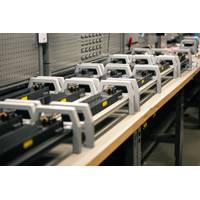
Kraken Books Multi-Million Dollar Sonar and Subsea Battery System Orders
Kraken Robotics has secured about $8.6 million (CAD 12 million) in new orders for its synthetic aperture sonar systems and subsea battery technologies from defense and commercial customers, including Teledyne Marine, Terradepth and two NATO navies.The orders cover Kraken’s synthetic aperture sonar (SAS), KATFISH towed SAS spares and SeaPower subsea batteries, the company said.Teledyne Marine has ordered both SAS systems and SeaPower batteries, which will be integrated on its Gavia and SeaRaptor autonomous underwater vehicles for undisclosed end-users.Kraken’s SAS will also support Terradepth
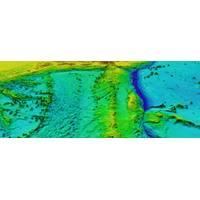
Raymarine Collaborates with Seabed 2030 Project to Advance Seabed Mapping
seafloor, supporting marine conservation, climate modeling, tsunami forecasting, and sustainable ocean resource management.As part of this collaboration, Raymarine is contributing a unique dataset of crowdsourced bathymetric recordings collected from thousands of vessels equipped with Raymarine sonar systems. This data, gathered from real-world usage across the globe, will enhance the resolution and coverage of existing seafloor maps, particularly in under-surveyed coastal and offshore regions.The Nippon Foundation, a private philanthropic organization based in Tokyo, has been the principal funder
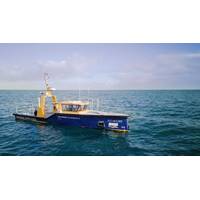
Down Under
. “We started doing this custom build work in 2019 on a project for the University of Indiana, funded by the US Navy, to develop a hybrid autonomous ROV/AUV that could self-navigate and avoid in-water objects on its own,” says Director and Founder Matthew Mooney. “It had a number of sonar systems onboard, and depth sensing cameras, and its own processing system that we designed and worked in collaboration with the team at Indiana University to create. It’s still being used for research purposes to this day in the US.”The company is currently making a ROV for an oil and gas
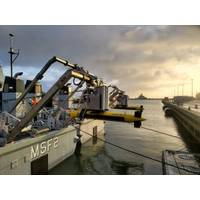
Deeply Innovative: Drivers in Subsea Defense
system, integrated with a Towed Synthetic Aperture Sonar (TSAS), is already in use with multiple navies for MCM and change detection, providing unmatched resolution and area coverage rates.KATFISH system. Credit: Kraken RoboticsNORBIT Subsea adds another layer of capability with its compact multibeam sonar systems and GuardPoint family of intruder detection solutions, enabling security teams to monitor harbors, naval bases, and underwater infrastructure in real time. Similarly, EdgeTech has a proven track record delivering side-scan sonar systems like the 4205 and 2205 payloads for allied MCM programs
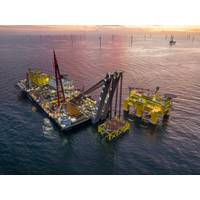
Upscaling Power Subsea: Cables and Connectors
an application, says Radue, so there’s not a lot of repeatability.Optical fibers are often used in systems that require greater bandwidth over longer distances, with a smaller footprint—smaller hull penetrations— for applications such as offshore oil and gas, towed arrays, side scan sonar systems, and oceanographic instrumentation. Image courtesy of BIRNS. Image courtesy BirnsTidal energy systems face similar challenges to offshore wind, with the harsh constant motion of tidal areas a key challenge. SMI recently took part in the upscaling of a tidal system in Japan led by system integrator

NUWC Division Newport Awards Recognize 12 Patent Inventors, Published Authors
A. Roodbeen: Patent 12,143,406, “Real-Time Network Intrusion Detection System"Undersea Warfare Electromagnetic Systems Department employees Christopher J. Morcom and Nathaniel Couch: Patent 12,081,411, “Internal Network Enumeration Tool”Stephen C. Butler of the Sensors and Sonar Systems Department: Patent 12,042,821, “Squirter Transducer”Undersea Warfare Platforms and Payload Integration Department employees Monica L. Blanchard and James M. LeBlanc, Dr. Thomas S. Ramotowski of the Sensors and Sonar Systems Department, and former Division Newport employees Rachel
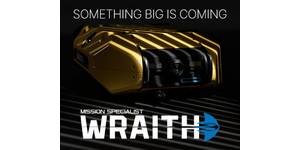
 August 2025
August 2025
